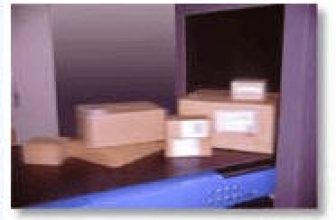
British Virgin Airways uses RFID to track parts
[ad_1]
Virgin Atlantic Airlines used RFID technology to track the company’s aircraft parts inventory at London’s Heathrow Airport. In June this year, the company carried out preliminary trials and plans to continue testing in the next 12 weeks. This RFID system will gradually be expanded to Virgin warehouses at other airports. The main purpose of this investment is to save the cost of searching for lost expensive parts.
“The misplacement of expensive parts is a headache.” said Peggy Chen, product manager of Oracle’s RFID and sensor division. Charlotte Tidball, a spokesperson for Virgin Atlantic Airlines, added that tracking parts is a more cost-effective way because the time spent searching for parts is also an expense for the company.
The hardware equipment required for the implementation of the first phase includes three readers, several handheld readers, and a smart label printer/encoder. Virgin Atlantic puts labels on several commonly used aircraft parts. When the parts enter the warehouse, employees use a laptop to enter the name of the item into the company’s Ultramain (a system that integrates logistics and mechanical maintenance) aviation maintenance and parts inventory tracking system . The next step will be a comprehensive inspection of the parts. If the parts pass the inspection, it will get a GRN code (Goods Receiving Number), which will be written into the label. The employees put the labels on the containers that contain the parts, as well as the boxes that can hold many parts. The label data is uploaded to the Oracle Sensor Edge Server middleware and then integrated into Virgin’s Ultramain system.
After the containers and cabinets are labeled at the entrance and inspection area of the warehouse, they are placed on storage racks or shipped out of the warehouse for immediate use on the plane. Before the part is loaded on the airplane, the labeled box used to hold it is destroyed, so the label will not be loaded on the airplane with the part.
The readers used in the test are Symbol MC900G, a total of three, one is at the entrance of the warehouse, the other is at the shelf area, and the third is at the exit. The printer/encoder is Printronix SL5000R, which can print labels that meet EPC Class 1 standards. Employees use handheld readers to scan containers and cabinets to locate and identify the parts they need.
Once the test is successful, the RFID system will be expanded to another Virgin Atlantic warehouse, but the company has not yet decided which warehouse to implement. Ms. Chen of Oracle said that Oracle’s system can analyze data from the Virgin RFID system to provide additional information, such as the specific time period when the parts are in the warehouse, and when the inventory is too much or too little.
[ad_2]





